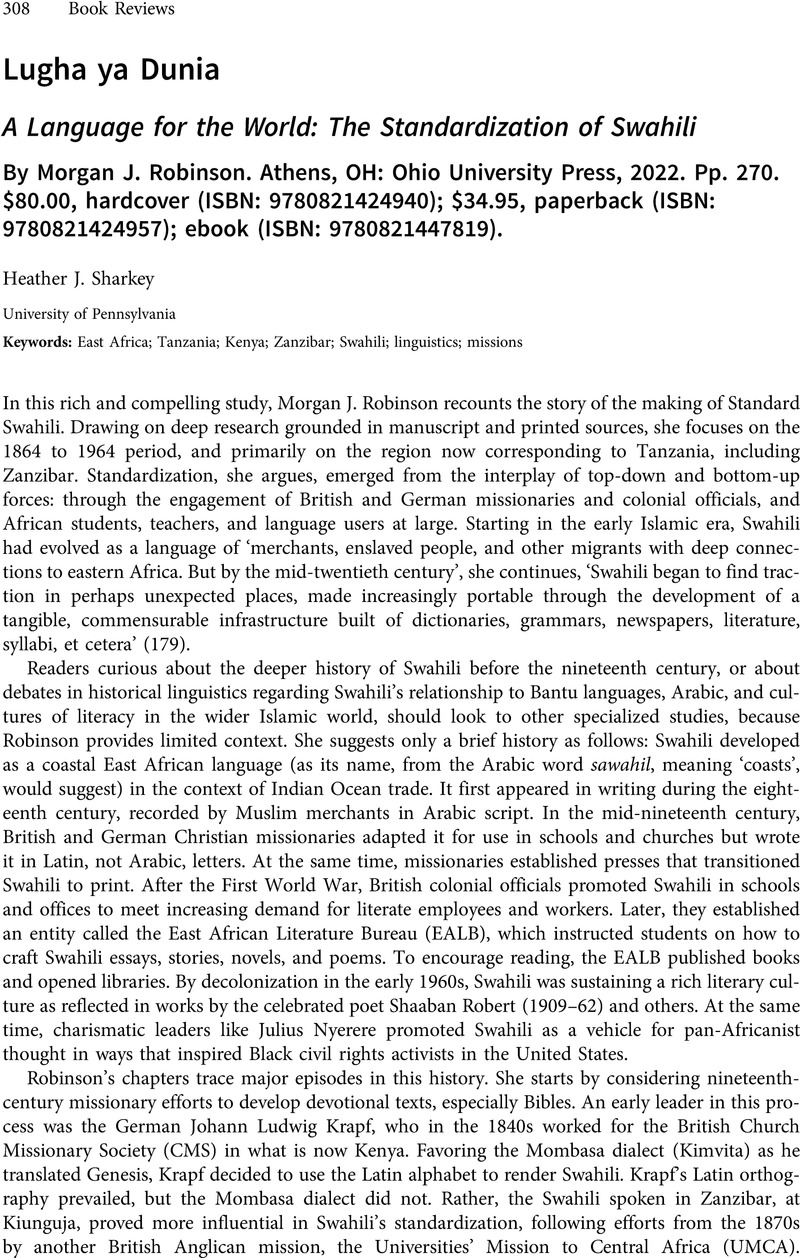No CrossRef data available.
Article contents
Lugha ya Dunia - A Language for the World: The Standardization of Swahili By Morgan J. Robinson. Athens, OH: Ohio University Press, 2022. Pp. 270. $80.00, hardcover (ISBN: 9780821424940); $34.95, paperback (ISBN: 9780821424957); ebook (ISBN: 9780821447819).
Review products
A Language for the World: The Standardization of Swahili By Morgan J. Robinson. Athens, OH: Ohio University Press, 2022. Pp. 270. $80.00, hardcover (ISBN: 9780821424940); $34.95, paperback (ISBN: 9780821424957); ebook (ISBN: 9780821447819).
Published online by Cambridge University Press: 18 July 2023
Abstract
An abstract is not available for this content so a preview has been provided. Please use the Get access link above for information on how to access this content.

- Type
- Book Review
- Information
- Copyright
- Copyright © The Author(s), 2023. Published by Cambridge University Press
References
1 wa-Thiong'o, N., Decolonising the Mind: The Politics of Language in African Literature (London, 1986)Google Scholar.



